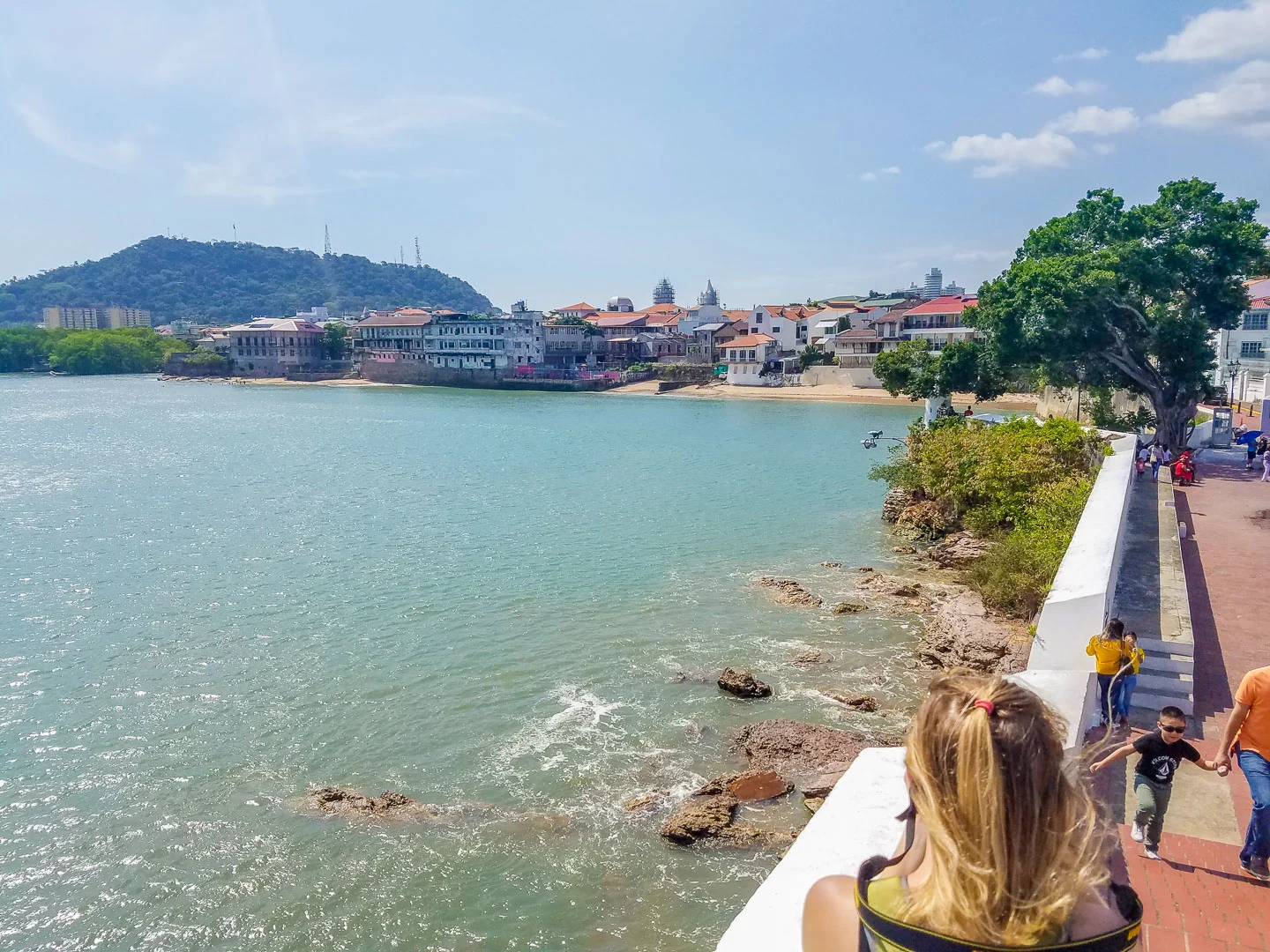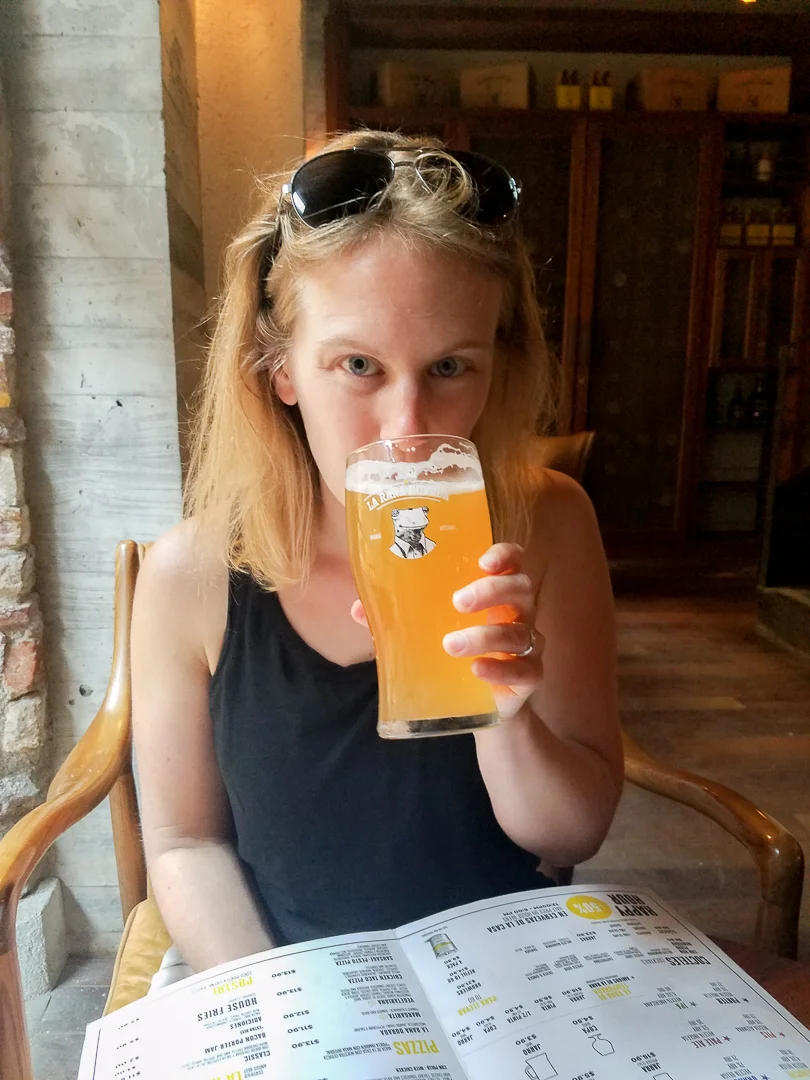Casco Viejo (Spanish for Old Quarter) Day 1
We stepped off the plane at 1:20am at Tocumen International Airport, drowsy and eager to get to our hotel for the night less than 1 mile away. We walked out hoping for a shuttle to our hotel, but given the hour did not see any means of transportation other than taxi. Knowing full well we were probably getting ripped off we begrudgingly agreed to pay $7 to get to our hotel and get some shut eye. However, what we did not expect was that this ripoff rate was still somehow not enticing enough to any of the 8 taxi drivers shooting the breeze at 2am and hitting on the one lone female trying to also get home for the night. After about 20 minutes of waiting around hoping one driver might change his mind, we teamed up with a couple from the UK and pestered the ring leader of the group to persuade the latest arriving taxi driver to accept the combined rate to drop us two couples off and be back before the group caught their breath from the boisterous laughter.
The next day we made our way to Casco Viejo and our hostel The Magnolia Inn. We had a very nice taxi driver who was determined to drop us off at the front door after a few wrong turns in the neighborhood and some directions from locals. By the time we arrived and checked in it was noon and we were hangry (so hungry that you get quite irritable) so we ran right out to find some lunch. Being that it was Sunday we actually found many places were doing brunch specials, but we managed to find a nice hole in the wall (literally) called Mahalo for desayuno (breakfast).
Desayuno at Mahalo
After fueling up we walked around about half of Casco Viejo the rest of the day seeing the town. While walking around we were immediately intrigued by the juxtaposition of old and new. We came here knowing that Casco Viejo is an UNESCO world heritage site and so we did some research and found it has an interesting history. Casco Viejo was founded in 1673, after Panama Viejo (founded in 1519) was burned to the ground in 1671 in the wake of the pirate attack by Henry Morgan. While walking around Casco Viejo we wondered why this area had also been abandoned and figured a widespread fire to have been the culprit here as well. At the start of the US construction of the Panama Canal in 1904, Casco Viejo was still the only city in Panama and what is now the Panama Canal Museum served as a headquarters for both the French Canal Company and the US Isthmanian Canal Commission.
Sadly as time went on Casco Viejo was abandoned and became a slum as what is now the modern city of Panama City expanded. Fortunately in 1997 the site was named a UNESCO world heritage site and over the last several years restoration work has turned Casco Viejo into one of the hippest places around Panama City and has great proximity to visit the Mira Flores locks.
Plaza de Independencia with the weekend market in the background
Plaza de Independencia Cathedral
A building in disrepair and mother nature slowly taking it back. Buildings like these are right next to newly restored buildings.
The Spanish influence is evident in all the buildings in Casco Viejo
The stark contrast of new and old
A look inside one of the un-restored buildings
We then ventured down to the waterfront and walked along Paseo de las Bovedas, a curved seawall with a stone promenade on top originally built to protect Panama City from pirate attacks in the colonial era. It now is lined with outdoor vendors selling various souvenirs and is decorated with lamps overhead and greenery. The walk by the sea provides a refreshing breeze on a hot day and a fantastic view of the Panama City skyline. At the end of the promenade is the Plaza Francia which pays homage to the French's failed attempt to build the Panama Canal.
An inviting entrance to Paseo Las Bóvedas
The Panama City skyline and the ongoing construction in Casco Viejo
Ruins of the Santo Domingo Church
After all of our walking around we were obviously thirsty so we went to the brewery that Lauren had seen earlier on the map for some beers. The brewery ended up being right next door to our hostel and we timed it just right and made it for their happy hour. Instinctively I ordered the beer with the highest alcohol content which ended up being a Belgian wheat ale and we both loved it! So we had another. We also had a great veggie pizza and planned a Morocco rendezvous down the road with some friends while we ate and drank.























